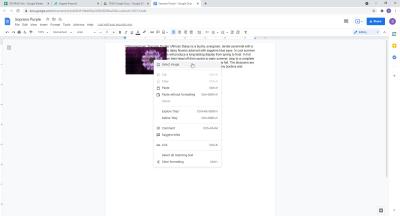If you’re an illustrator looking to turn your creative work into a steady income stream, Shutterstock is a fantastic platform to consider. It’s one of the world’s leading stock image sites, connecting artists with millions of buyers worldwide. Uploading your illustrations might seem a bit daunting at first, but once you get the hang of the process, it’s straightforward and rewarding. Whether you’re just starting out or trying to boost your existing portfolio, understanding how to properly upload and showcase your work is key to increasing your sales and getting your art seen by the right audience.
Preparing Your Illustrations for Submission

Before you hit that upload button, it’s essential to get your illustrations ready to meet Shutterstock’s standards. First, focus on quality—high-resolution images are a must. Shutterstock recommends a minimum of 4 megapixels, but aiming for 8 or more ensures your work looks professional and is versatile for buyers’ needs. Make sure your illustrations are sharp, well-lit (if applicable), and free of any pixelation or blurriness.
Next, consider the file format and naming conventions. Shutterstock accepts JPEGs for illustrations, so save your artwork in the JPEG format, using RGB color mode to ensure colors display correctly across devices. Name your files descriptively—use clear, keyword-rich titles that help your illustration get discovered in search results.
It’s also important to review Shutterstock’s content guidelines. Your illustrations should be original, free of copyrighted material unless you have the rights, and should not include prohibited content like hate symbols or explicit imagery. If your illustration contains recognizable people or trademarks, make sure you have model releases or property releases, if necessary.
Finally, organize your files into folders based on themes or categories, and prepare a detailed keyword list. Keywords are crucial—they help buyers find your illustrations quickly. Think about the concepts, colors, styles, and uses related to your artwork. Use relevant keywords naturally and avoid keyword stuffing to improve your chances of sales.
By taking these preparation steps, you’ll set yourself up for a smooth upload process and increase the likelihood of your illustrations being accepted and appreciated by Shutterstock’s global audience.
Creating a Shutterstock Contributor Account

So, you’re ready to start sharing your amazing illustrations and making some sales? The first step is setting up your Shutterstock Contributor account. Think of this as your official storefront where clients from all over the world can discover and purchase your artwork. Don’t worry; the process is pretty straightforward, and I’ll walk you through it.
To get started, head over to the Shutterstock Contributor Registration Page. Here’s what you’ll need to prepare:
- Basic personal info: Your name, email address, and country of residence.
- Payment details: Bank account info or PayPal email for receiving your earnings.
- Tax information: Depending on your country, you might need to provide tax ID or equivalent info.
Once you’ve filled out the registration form, you’ll receive a confirmation email. Just follow the link to verify your email address, and you’ll be on your way to becoming a Shutterstock contributor!
After logging in, take some time to explore the dashboard. It might look a little overwhelming at first, but don’t worry. It’s mainly where you’ll upload your work, check your earnings, and see your stats. Make sure you read the Contributor Guidelines so you understand what kind of content Shutterstock is looking for and how to prepare your illustrations accordingly. This way, you set yourself up for success from the get-go!
Step-by-Step Guide to Uploading Your Illustrations

Great! You now have your contributor account set up. The next step is uploading your illustrations. Let me walk you through the process step-by-step so it’s as simple as pie.
- Log into your dashboard: Head over to your Shutterstock Contributor account and sign in.
- Click on the “Upload” button: Usually, it’s prominently displayed on your dashboard or in the menu.
- Select your files: Choose the illustrations you want to upload from your computer. Shutterstock accepts various formats, but for illustrations, high-resolution PNG, JPG, or EPS files are common. Make sure your files are clear, properly cropped, and meet the size requirements.
- Add metadata: Now, this step is super important. Fill in details like the title, description, and keywords. Think of keywords as tags that help people find your artwork. Be specific and relevant—use words that describe the style, subject, and mood of your illustration.
- Choose the appropriate categories: Shutterstock provides categories to help classify your work. Picking the right category increases your chances of being discovered by the right clients.
- Set licenses and pricing: Usually, Shutterstock handles licensing and pricing automatically based on their platform. As a contributor, your main focus is ensuring your files are uploaded correctly and metadata is thorough.
- Review your upload: Double-check everything. Make sure your files look good, metadata is accurate, and there are no typos.
- Submit for review: Once everything looks perfect, hit the “Submit” button. Your illustrations will then go into Shutterstock’s review queue.
After submission, Shutterstock’s team will review your illustrations—this can take anywhere from a few hours to a few days. If your work meets their quality standards and guidelines, it will go live on the platform, making it available for purchase. If not, they’ll give you feedback on what needs fixing. Don’t get discouraged—use their feedback to improve and resubmit!
And that’s it! Uploading illustrations might seem intimidating at first, but once you get the hang of it, it becomes a quick and easy part of your creative routine. Keep uploading consistently, and over time, you’ll build a diverse portfolio that attracts more buyers and boosts your sales.
Optimizing Your Illustrations for Better Visibility and Sales
Once you’ve uploaded your beautiful illustrations to Shutterstock, the next step is making sure they get noticed. Just like in any marketplace, visibility is key to increasing your sales. Optimizing your illustrations isn’t just about keyword stuffing; it’s about smart, strategic presentation that helps your work stand out and reach the right audience.
Here are some practical tips to optimize your illustrations effectively:
- Use Descriptive and Relevant Keywords: Think about what buyers might search for when looking for images like yours. Be specific—if you’ve created an illustration of a “happy family picnic,” include keywords like family, picnic, outdoor, summer, happy, children. Avoid vague tags like “art” or “design” that won’t help your images get found.
- Write Clear and Concise Titles: Your title should accurately describe your illustration. Instead of a generic title like “Cute Drawing,” try “Cute Cartoon Family Having a Picnic in the Park.” This helps both Shutterstock’s algorithm and potential buyers understand what your image is about.
- Craft Effective Descriptions: Use the description box to add context, details, and potential uses for your illustration. Mention who might need it—marketers, educators, designers—and highlight its versatility.
- Choose the Right Categories: Assign your illustration to categories that truly match its content. This improves discoverability when users browse by category.
- Maintain High-Quality Files: Upload your work in the recommended resolution and format. Shutterstock prefers images at 4MP or higher with a clean, professional look. Clear, crisp images attract more buyers.
- Consistent Portfolio Updates: Regularly add new illustrations. A fresh portfolio signals activity and increases overall visibility in search results.
Remember, the goal is to make it as easy as possible for potential buyers to find your illustrations. Think like your audience—what keywords and descriptions would they use? Keep your tags relevant, your titles accurate, and your images high-quality, and you’ll see better visibility and, hopefully, increased sales.
Understanding Shutterstock’s Review Process
Before your illustrations hit the shelves, they go through a review process by Shutterstock’s team. This step is crucial because it ensures that all content on the platform meets quality, technical, and legal standards. Understanding what to expect can help you prepare your submissions better and avoid unnecessary rejections.
So, how does this review process work?
- Submission Review: After you upload your illustration, it enters the review queue. This can take anywhere from a few hours to a few days, depending on current volume and your account status.
- Content Quality Check: Shutterstock’s team examines your illustration’s visual quality—looking for clarity, proper composition, and absence of artifacts or distortions. They want images that look professional and are ready for commercial use.
- Technical Compliance: Your files must meet technical specifications—correct resolution, color profile (sRGB), and format. For illustrations, vector files (like AI or EPS) are common, but raster images (JPEG, PNG) are also accepted.
- Legal Considerations: Your illustration must be original, and if it contains recognizable people, trademarks, or protected content, you need proper model or property releases. Shutterstock is strict about copyright infringement.
- Rejection and Resubmission: If your illustration doesn’t pass the review, you’ll receive feedback explaining why. Common reasons include poor quality, inappropriate content, or technical issues. Don’t be discouraged—use the feedback to improve your work and resubmit.
To improve your chances of passing the review on the first try, consider the following tips:
- Follow Shutterstock’s guidelines carefully. Review their contributor resources and style guides.
- Ensure your files are high resolution and correctly formatted.
- Remove any watermarks or branding from your artwork.
- Double-check for legal issues—make sure you have rights for all elements used.
Understanding this review process helps you set realistic expectations and prepares you to produce content that aligns with Shutterstock’s standards. Once approved, your illustrations become part of a global marketplace, ready to generate sales and grow your portfolio. Patience and attention to detail truly pay off here.
Tips for Increasing Your Illustration Sales on Shutterstock
Looking to boost your sales on Shutterstock? You’re in the right place! Selling illustrations online is a fantastic way to turn your creativity into a steady income stream, but it does require some strategic effort. Here are some practical tips to help you stand out and increase your sales:
1. Focus on Trends and Popular Topics
Stay updated with current trends and popular themes that buyers are searching for. Whether it’s seasonal graphics, technology, health, or social issues, aligning your illustrations with what’s in demand can significantly boost your visibility and sales. Use Shutterstock’s trending searches or explore other stock platforms to identify hot topics.
2. Create High-Quality, Unique Content
Quality always wins. Make sure your illustrations are crisp, well-composed, and original. Avoid overused clichés unless you can put a fresh twist on them. Unique and high-quality images are more likely to get accepted and purchased repeatedly.
3. Optimize Your Keywords and Titles
Think of your keywords as the bridge between your illustration and potential buyers. Use descriptive, relevant, and specific keywords. Include synonyms and related terms to widen your reach. Clear, concise titles also help buyers understand what your illustration depicts immediately.
4. Diversify Your Portfolio
Don’t put all your eggs in one basket. Upload a variety of illustrations covering different themes, styles, and formats. This way, you’ll appeal to a broader audience, increasing your chances of making sales across multiple niches.
5. Pay Attention to Technical Requirements
Ensure your submissions meet Shutterstock’s technical guidelines — proper resolution, transparent backgrounds if needed, correct file formats, and proper color profiles. Well-prepared files reduce rejection rates and speed up the review process.
6. Promote Your Work Outside Shutterstock
Leverage social media, your personal website, or design communities to showcase your illustrations. Building a personal brand can attract more buyers to your Shutterstock portfolio and increase your sales over time.
7. Regularly Update and Refresh Your Portfolio
Consistency is key. Regularly upload new illustrations to keep your portfolio active and relevant. Refresh older pieces by updating keywords or creating variations. A lively, up-to-date portfolio attracts more views and potential sales.
Common Mistakes to Avoid When Uploading Illustrations
While uploading your illustrations might seem straightforward, there are some common pitfalls that can hinder your success. Avoiding these mistakes can save you time and help improve your sales:
1. Ignoring Shutterstock’s Guidelines
Each stock platform has specific requirements. Ignoring Shutterstock’s guidelines regarding image quality, metadata, or content restrictions can lead to rejections or even account suspension. Always read and follow the submission rules carefully.
2. Using Poor-Quality or Low-Resolution Files
Uploading blurry, pixelated, or low-resolution images damages your reputation and reduces sales. Ensure your illustrations are at least 4MP (megapixels) or as specified, with sharp details and proper color management.
3. Overstuffing Keywords or Using Irrelevant Tags
While keywords are vital, stuffing them with irrelevant or excessive tags can harm your rankings and credibility. Use accurate, specific keywords that truly describe your illustration. Avoid keyword spamming.
4. Not Doing Proper Keyword Research
Guesswork won’t cut it. Take the time to research what buyers are searching for. Use tools like Shutterstock’s search bar suggestions or external keyword tools to find relevant terms that will help your illustrations get discovered.
5. Uploading Outdated or Dull Designs
Trendy, fresh, and visually appealing illustrations sell better. Avoid uploading outdated styles or dull, uninspired images. Keep your portfolio lively and aligned with current design aesthetics.
6. Neglecting to Tag Versions or Variations
If your illustration can be adapted or has multiple variations, upload them as separate files with unique keywords. This maximizes your exposure and sales opportunities.
7. Forgetting to Review Before Upload
Always double-check your files, metadata, and preview images before hitting submit. A small oversight can lead to rejection or fewer sales. Take a moment to review everything carefully.
By being mindful of these common mistakes and implementing the tips above, you’ll set yourself up for a more successful journey on Shutterstock. Remember, patience and consistency are key — keep creating, uploading, and refining your approach, and your sales will grow!
Conclusion and Final Tips for Success on Shutterstock
Successfully uploading illustrations to Shutterstock can significantly boost your sales and visibility as a creator. To maximize your potential, remember that consistency, quality, and understanding your audience are key. Ensure your illustrations meet Shutterstock’s technical requirements, such as appropriate resolution, file format, and keywording. Proper keywording enhances discoverability, so use relevant, specific tags to describe your work accurately.
Here are some final tips to help you succeed:
- Maintain high quality: Upload only your best work, paying attention to details, composition, and originality.
- Stay consistent: Regular uploads keep your portfolio fresh and increase chances of sales.
- Optimize keywords: Use a mix of broad and specific tags; think about what buyers might search for.
- Research trends: Stay updated on popular themes and styles in the stock illustration market.
- Engage with the community: Participate in forums and read Shutterstock’s contributor resources to learn best practices.
By applying these strategies and continuously improving your skills, you’ll enhance your presence on Shutterstock and increase your sales over time. Patience and persistence are essential—success doesn’t happen overnight, but with consistent effort, your illustrations can reach a broader audience and generate steady income.


